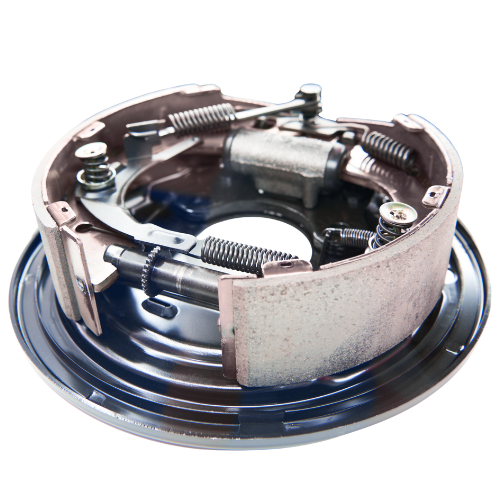Explore the four key components that make up a truck’s brake system—engineered to ensure safe, reliable, and powerful stopping performance on every road.

The operational landscape of commercial trucking is governed by a perpetual trade-off between initial equipment cost and long-term efficiency. Nowhere is this tension more evident than in the choice of a heavy vehicle braking system. For decades, the industry standard was the tried-and-true drum brake, an assembly valued for its durability and low initial acquisition cost. However, accelerating demand for enhanced safety, reduced maintenance downtime, and optimized performance has driven a significant technological shift toward air disc brake (ADB) systems. Fleet managers today face a complex decision that hinges on calculating the Total Cost of Ownership (TCO), extending far beyond the price tag of the components themselves. This analysis examines the technical distinctions and financial implications of migrating from legacy drum systems to modern ADB technology, utilizing components like advanced brake calipers & kits and robust brake discs to achieve strategic advantages in commercial transport.
The drum brake system operates using an S-cam mechanism to force two internal, crescent-shaped brake shoes outward against the inner surface of a rotating brake drum. The friction generated slows the vehicle. This established technology has several inherent benefits, including a large friction area and the ability to self-energize, providing significant stopping force. Historically, drum brakes have been favored due to their simple design principle, which translates to a lower manufacturing cost and therefore a lower initial vehicle specification price.
Operational Challenges of Drum Systems
Despite their lower initial cost, drum systems present considerable operational challenges that impact TCO and safety:
The air disc brake (ADB) system represents a fundamental evolution in heavy vehicle stopping technology. It utilizes a powerful brake caliper assembly to squeeze friction material, known as brake pads, onto a rotating brake disc or rotor. This design is highly effective and significantly less prone to performance degradation than the drum system.
Key Design Advantages of Air Disc Brakes
The core advantage of ADB technology lies in its operational design, which delivers superior performance and simplified maintenance:
The upfront cost of specifying ADB systems is typically higher than that of drum brakes. However, a comprehensive TCO analysis reveals that the initial investment in ADB systems is often recouped through substantial long-term savings in maintenance and operational efficiency.
1. Maintenance Labor and Downtime Reduction
2. Extended Component Life and System Balance
3. Compliance and Operational Savings
The shift to ADBs is fundamentally driven by safety regulations and performance metrics. ADB systems consistently deliver superior metrics required for modern commercial transport:
Furthermore, the responsiveness and control offered by ADBs are essential for integration with Advanced Driver-Assistance Systems (ADAS), such as Automatic Emergency Braking (AEB). AEB systems require extremely rapid, precise, and repeatable brake application, conditions that modern brake discs and brake calipers are engineered to meet. The lag and inherent variability of S-cam drum actuation make them less suitable for the high-speed, controlled demands of ADAS technologies. The integration of modern brake chambers with the ADB system further ensures reliable pneumatic actuation and control across the axle.

GAPASA is recognized as a premier supplier of heavy-duty truck components, committed to equipping commercial fleets with the highest quality parts engineered for resilience and performance. Part of the company’s focus is on minimizing vehicle downtime by supplying reliable parts that meet or exceed Original Equipment Manufacturer (OEM) specifications, thus reinforcing safety and operational efficiency. Here's a range of GAPASA's high-quality heavy duty truck parts:
The decision to transition from drum brakes to air disc brake technology is a strategic investment rather than a mere cost increase. While the initial capital outlay for ADB systems, including the advanced brake caliper assemblies and brake discs, is higher, the superior performance characteristics and significant TCO reductions are undeniable. The combination of faster maintenance cycles, reduced labor, the elimination of manual slack adjusters oversight, and a tangible improvement in compliance and safety scores makes the ADB system the economically and operationally superior choice for modern commercial fleets. For fleet operators prioritizing safety, minimizing downtime, and aligning their operations with the requirements of advanced vehicle technology, the adoption of air disc brakes is not merely an upgrade; it is a strategic imperative for long-term success.